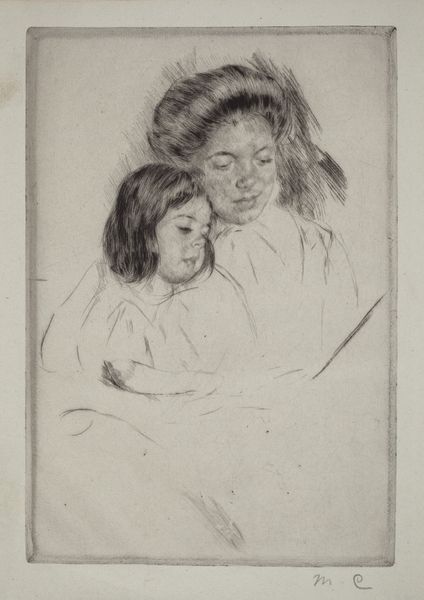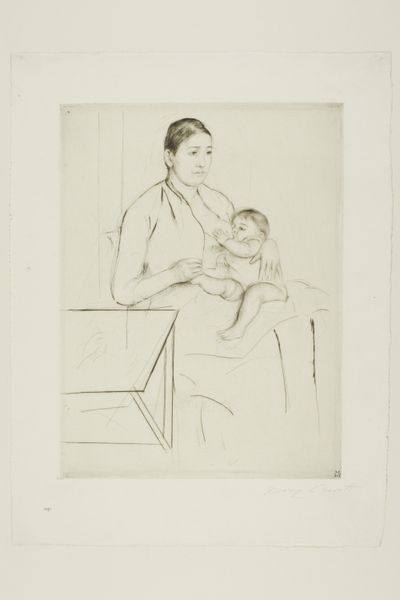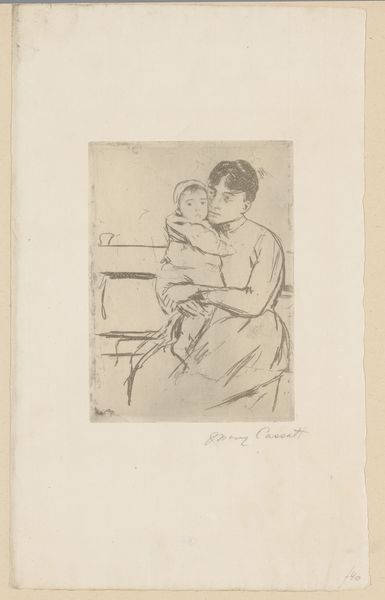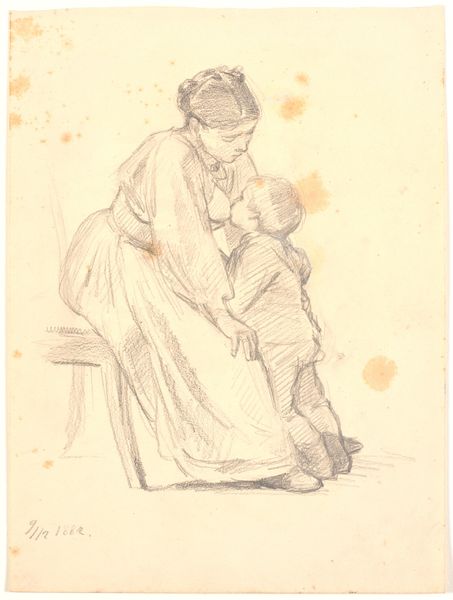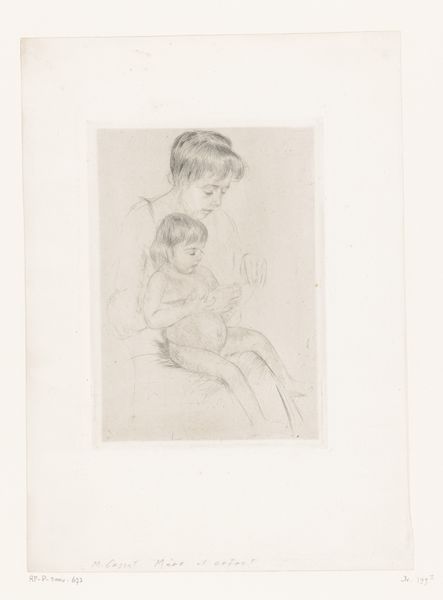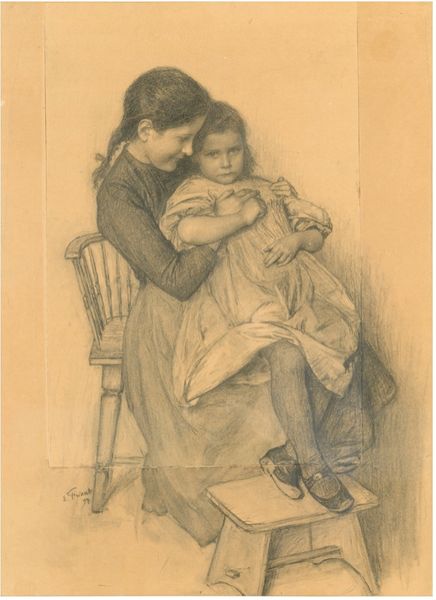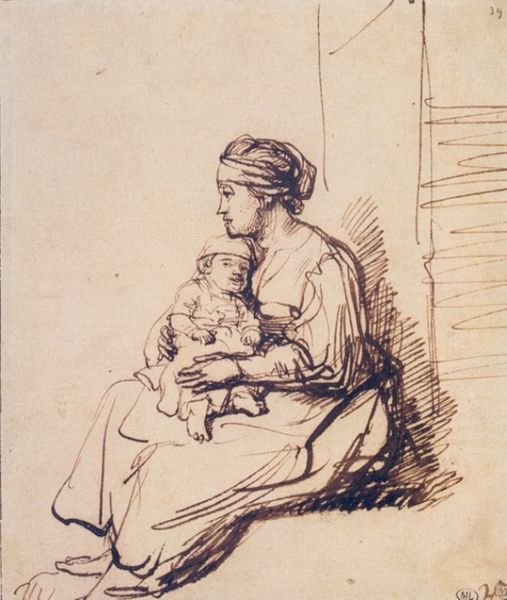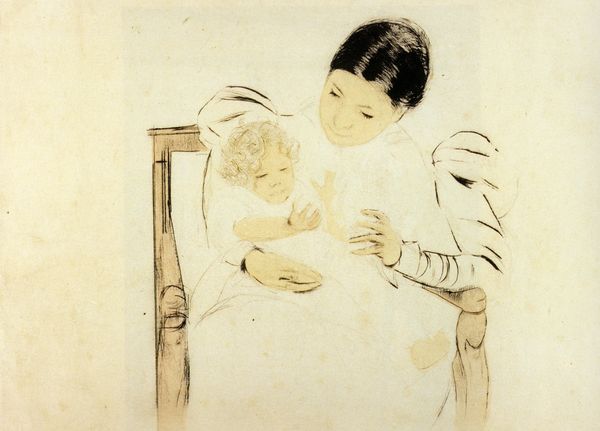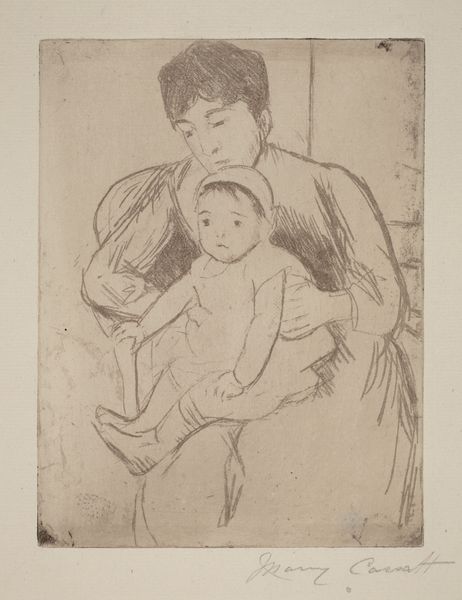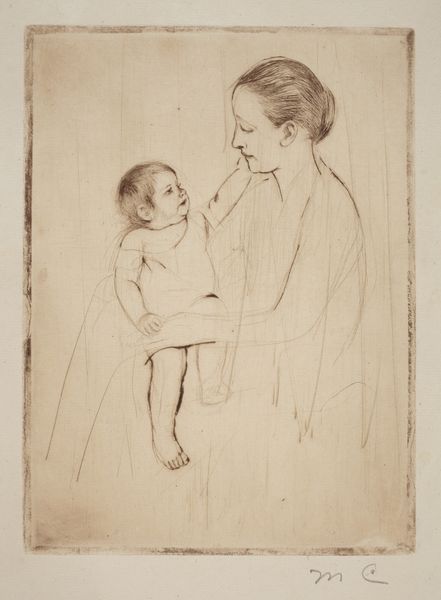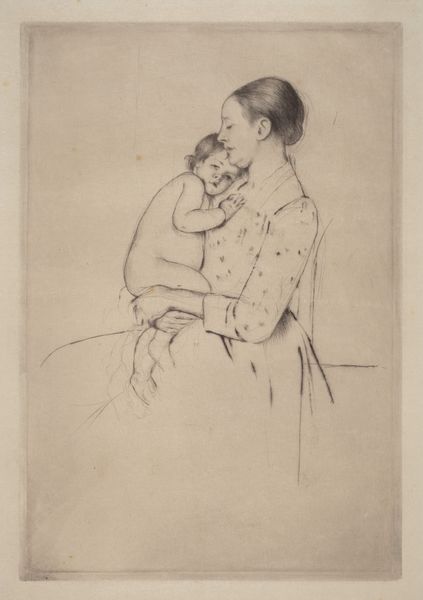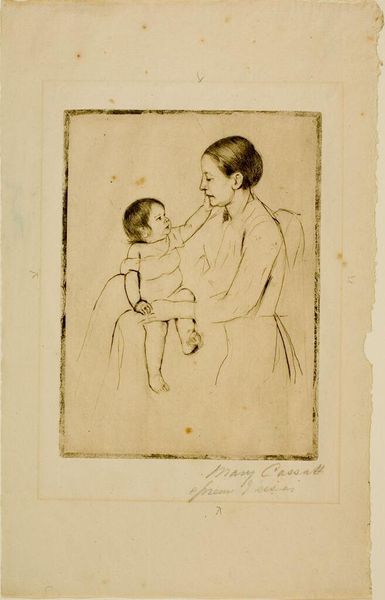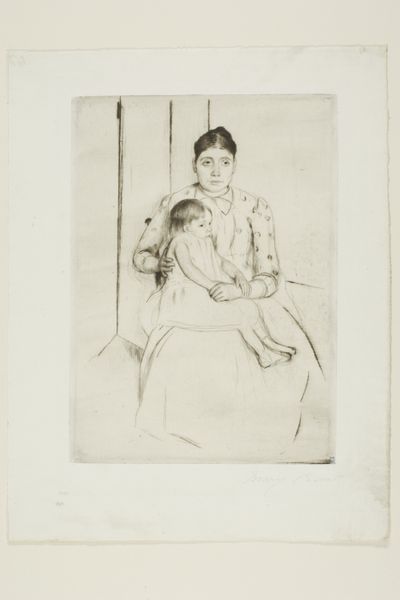
Dimensions: plate: 43.97 × 26.67 cm (17 5/16 × 10 1/2 in.)
Copyright: National Gallery of Art: CC0 1.0
Curator: This is Mary Cassatt's "The Crocheting Lesson," created around 1902. It’s an etching and drypoint print. What’s your first take on it? Editor: It feels incredibly intimate, almost a secret shared between the woman and the child. The sketchy lines soften the whole scene, like a half-remembered dream of childhood. Curator: Absolutely. Cassatt's work often centers on these domestic scenes, especially the bond between mothers and children. She navigated a male-dominated art world, and her choice of subject matter can be seen as both a celebration of the domestic sphere and a subtle commentary on the limited roles available to women at the time. Editor: It’s more than just domestic though, isn’t it? The child isn’t simply present, but learning. There’s this transmission of knowledge, a connection being forged with each loop of thread. That quiet absorption… it resonates. My grandmother taught me to knit, and this really takes me back. Curator: That echoes what I find significant – her approach disrupts academic conventions of depicting women. Unlike the often idealized or objectified portrayals by her male contemporaries, Cassatt emphasizes the intellect, emotion, and agency of women, specifically within their familial roles. The print medium also allows it to circulate widely. Editor: I keep coming back to the lightness of the etching. It avoids sentimentality while radiating warmth and a quiet, reassuring competence. There's almost a fragility in those fine lines. You sense the impermanence of the moment, even as the lesson endures. It makes me think of whispered stories and sun-drenched afternoons. Curator: Exactly. These scenes, made accessible as prints, were meant for public consumption, presenting women and their relationships as complex and worthy subjects, rather than decorative objects. Cassatt gave visibility to a very particular kind of labor and love. Editor: I'll certainly never look at a simple crocheting scene the same way again. The print captures that gentle moment, and transforms it into something enduring, wouldn't you agree? Curator: Indeed. It is a quiet revolution captured in ink.
Comments
No comments
Be the first to comment and join the conversation on the ultimate creative platform.
